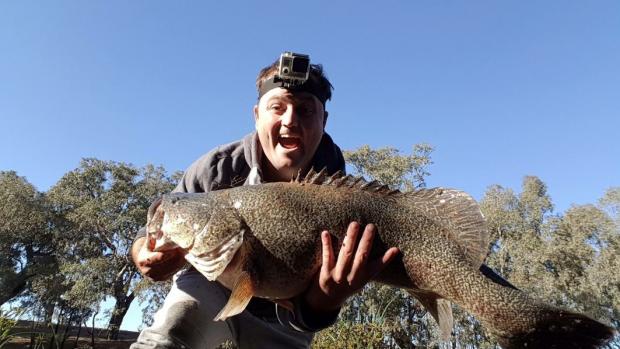Loading
Catching cod fever

Adrian Leo has been fishing in the Campaspe River between Eppalock Dam and Elmore for years.
The Bendigo local has walked pretty much every inch of the reach, looking for the perfect spot to wet a line. In recent times that has become a lot easier.
“Over the past few years, everything is healthier,” he said.
“The water quality has improved, especially in the areas that have been fenced off, and the fishing has really improved.
“It’s not just the amount and their size, but it is the health of the fish as well. I have caught Murray cod in a lot of rivers and they have been skinny; you can see their ribs.
“It’s the opposite in the Campaspe. The cod and the yellow belly have a lot of meat on them, have more vibrant colours and are a lot healthier.”
Adrian is a catch-and-release fisherman and has seen a big difference in the size of both the cod and golden perch (yellow belly) being pulled out of the river.
“My largest cod is 85cm, but my mate caught one that was 104cm, which is almost unheard of in the Campaspe,” he said.
“I’ve caught a couple of 70cm cod, including a 75cm with a surface lure, and a lot of 50s. I have also caught a heap of 30s, which proves there are different generations swimming around.”
Murray cod spawning was recorded for the first time in the Campaspe River last year, on the back of the annual winter and spring flows.
The Endangered fish has been a focus of the North Central Catchment Management Authority (CMA), as has the Critically Endangered silver perch, the Vulnerable Murray Darling rainbowfish, and golden perch.
“Water for the environment is used to keep water levels relatively steady and prevent rapid increases or decreases that occur as a result of fluctuating demand during the irrigation season,” North Central CMA Environmental Flows Project Manager Darren White said.
“A steady flow means the cod will stay on their nests, which increases the chances of successful spawning. We want fish like the ones Adrian has caught to hang around as long as they can.
“That’s why we are starting our spring flow in the coming weeks.”
An initial pulse will help clear the banks of leaf litter, mitigating against a summer blackwater event.
“After that, a steady flow will move down, helping the cod, as well as improving vegetation,” Mr White said.
A maximum of 18,000 ML of water for the environment will flow down the river until December, on top of irrigation flows, timed to benefit the cod and the overall health of the river.
Less than 20 per cent of Victoria’s water entitlements are allocated to the environment, with 60 per cent diverted for irrigation, and another 20 per cent for towns and cities.
The latest seasonal irrigation determination for the region has the Campaspe remaining at 100 per cent allocation for high reliability water shares.
The flow is part of the Victorian Government’s $222 million investment over the next four years to improve the health of waterways and catchments.
The flows are in line with VEWH’s Seasonal Watering Plan 2018-19, which is available to download from www.vewh.vic.gov.au, and regular updates are posted on the North Central CMA website www.nccma.vic.gov.au
